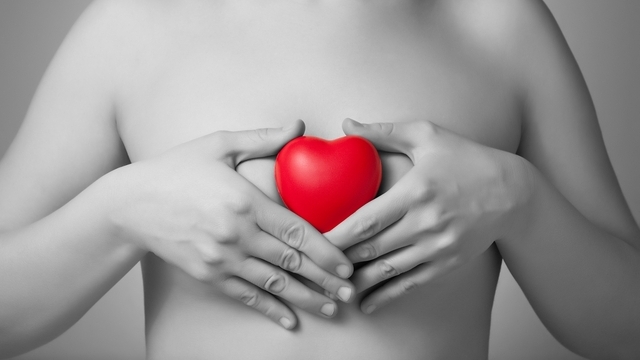As defined by BreastCancer.org, breast cancer is an uncontrolled growth of breast cells.
How does cancer develop? This condition is a result of abnormal changes in the genes. These genes are the ones that control the growth of each cell in addition to keeping them healthy. Under normal conditions, as some cells grow and divide, others will die off. But with cancer, the abnormal cells start growing at such an unusually rapid pace that a tumor soon forms.
Some tumors are benign, while others are malignant or cancerous. With breast cancer, this malignancy more than likely starts in the milk-producing glands – the ducts from where milk flows to the nipple. If left unchecked, cancer cells of the breast can invade healthy breast tissue or even to lymph nodes located underarm. And as BreastCancer.org states, once it enters the lymph nodes, it is very easy to spread to other parts of the body. As regards to what parts of the body are affected or how far it has spread, scientists refer to this as stages of breast cancer.
The stages of breast cancer are listed below, as indicated by Cancer.gov:
Stage 0 (carcinoma in situ)
There are 2 types of breast carcinoma in situ:
Ductal carcinoma in situ (DCIS) is a noninvasive condition in which abnormal cells are found in the lining of a breast duct. The abnormal cells have not spread outside the duct to other tissues in the breast. In some cases, DCIS may become invasive cancer and spread to other tissues, although it is not known at this time how to predict which lesions will become invasive.
Lobular carcinoma in situ (LCIS) is a condition in which abnormal cells are found in the lobules of the breast. This condition seldom becomes invasive cancer; however, having lobular carcinoma in situ in one breast increases the risk of developing breast cancer in either breast.
Stage I
In stage I, cancer has formed. The tumor is two centimeters or smaller and has not spread outside the breast.
Stage IIA
In stage IIA:
No tumor is found in the breast, but cancer is found in the axillary lymph nodes (the lymph nodes under the arm)
Or the tumor is two centimeters or smaller and has spread to the axillary lymph nodes
Or the tumor is larger than two centimeters but not larger than five centimeters and has not spread to the axillary lymph nodes
Stage IIB
In stage IIB, the tumor is either:
Larger than two centimeters but not larger than five centimeters and has spread to the axillary lymph nodes
Or larger than five centimeters but has not spread to the axillary lymph nodes
Stage IIIA
In stage IIIA:
No tumor is found in the breast. Cancer is found in axillary lymph nodes that are attached to each other or to other structures, or cancer may be found in lymph nodes near the breastbone
Or the tumor is two centimeters or smaller. Cancer has spread to axillary lymph nodes that are attached to each other or to other structures, or cancer may have spread to lymph nodes near the breastbone
Or the tumor is larger than two centimeters but not larger than five centimeters. Cancer has spread to axillary lymph nodes that are attached to each other or to other structures, or cancer may have spread to lymph nodes near the breastbone.
Or the tumor is larger than five centimeters. Cancer has spread to axillary lymph nodes that may be attached to each other or to other structures, or cancer may have spread to lymph nodes near the breastbone
Stage IIIB
In stage IIIB, the tumor may be any size and cancer:
Has spread to the chest wall and/or the skin of the breast.
And may have spread to axillary lymph nodes that may be attached to each other or to other structures, or cancer may have spread to lymph nodes near the breastbone.
Stage IIIC
In stage IIIC, there may be no sign of cancer in the breast or the tumor may be any size and may have spread to the chest wall and/or the skin of the breast. Also, cancer:
Has spread to lymph nodes above or below the collarbone
May have spread to axillary lymph nodes or to lymph nodes near the breastbone
Stage IIIC breast cancer is divided into operable and inoperable stage IIIC
In operable stage IIIC, the cancer:
Is found in 10 or more axillary lymph nodes
Is found in lymph nodes below the collarbone
Is found in axillary lymph nodes and in lymph nodes near the breastbone
In inoperable stage IIIC breast cancer, the cancer has spread to the lymph nodes above the collarbone
Stage IV
In stage IV, the cancer has spread to other organs of the body, most often the bones, lungs, liver, or brain.
Resouces: Cancer.gov, BreastCancer.org
Dita Faulkner is a freelance writer. She is involved in community service work in her town. This work focuses on families and individuals who desire and need a hope for a better future and, in turn, gives them the tools to make it so.
Please read her inspiring poetry at: http://www.lulu.com/product/paperback/red-toenails/6181258?productTrackingContext=search_results/search_shelf/center/1






Add a Comment2 Comments
Are you aware that up to 80% of all breast cancer is, as long suspected, is a result of chronic vitamin D deficiency?
The facts are clear and irrefutable. Please check the following links and pass the word. No reason at all that 150 million women should live in dread.
(links removed by EmpowHER Moderator)
Incidentally this evidence has been disseminated to all the national health authorities of the world (all!). That includes our own government though the reception appears to be one of stunned disbelief. I am hoping you will use your position to pass this along and spare thousands of lives unnecessarily ended or traumatized by breast cancer diagnosis.
The Nationa Breast Cancer Foundation is well aware of the development/confirmation. Admittedly it puts them in an extremely awkward postion. There are a lot of jobs on the line and the fundraising organization will be profoundly altered. 75 years ago a similar, though vague, reality dawned on the world with the invention of antibiotics. Who would have thought that such a scourge could ever be defeated? Well it has happened again and vitamin D deficiency is the new criminal utterly convicted of the crime.
The time for breast cancer "awareness" has passed. It is now clearly the time for "prevention". Let’s get the word out quickly and make supplementation of vitamin D (25 OH D- serum level at least 50 ng/ml, year round) the rule, not the exception.
I would strongly urge you to investigate "vitamin" D as its benefits extend well beyond breast cancer prevention. In fact, this victory is but a tiny, tiny portend of things to come regarding vitamin D. In case you are not aware "vitamin" D is no such thing. When metabolized it is a steroid hormone, more than one trillion (trillion) times more powerful (molecularly speaking) than estrogen or testosterone, somewhat similar in class.
It is now apparent to researchers like me that vitamin D deficiency is the root cause of many, if not nearly all, early onset chronic diseases. Mainstream medicine and in particular, the drug companies, missed it almost completely. The fact is that in its natural, most useful form (D3-cholecalciferol), it is neither patentable or a controlled substance. No matter as its innate value to human health cannot be overstated. It is simply the missing link to so many common and deadly early onset diseases.
In closing I would ask you to examine the number of doctors who now supplement vitamin D after having been made aware of the facts, in this case breast cancer prevention. With the exception of those having been diagnosed with certain rare conditions (sarcoidosis etc.) the figure is 100%.
The facts are clear regarding breast cancer prevention. Vitamin D supplementation to healthy, natural levels, is the magic bullet we have been looking for. No amount of denial will change this from the truth. Attempts to discredit the confirmation will not be successful and will only result in further delay in supplementation to the goal of national vitamin D repletion.
We should instead focus efforts to communicate this great victory immediately. Please be part of the effort to spare women the horror of unnecessary breast cancer development.
May 5, 2010 - 6:10amThis Comment
The Best way to fight Cancer is by spreading cancer awareness. Though most citizens of developed countries know about cancer, but the third world developing nations are too far behind when it comes to cancer awareness. They still tend to follow there old ways of life and some even try to treat cancer using spiritual and other out of the world things.
Most forms of cancer can be cured if diagnosed early, but often we tend to be negligent which at times can be life threatening. If we find anything abnormal in our body then we should approach a qualified doctor.
So please remember, to fight cancer you have to diagnose and treat it as early as you can.
I’ve take a small initiative on my part in the form of (a blog about cancer.)
Its time to spread cancer awareness, make people around you realize the need of early diagnosis.
(Link to website removed by EmpowHER moderator.)
May 5, 2010 - 6:06amThis Comment